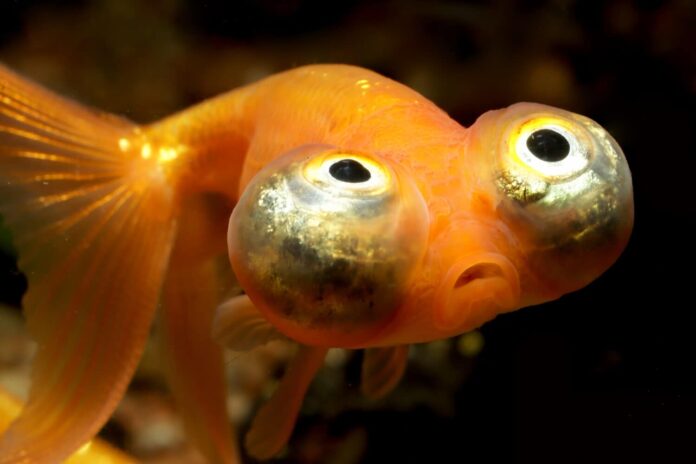Fish with the Big Eyes
Fish come in a vast array of shapes, sizes, and colors. One of the most striking features on certain species are their large, bulbous eyes that seem disproportionate to their body size. This article will explore some of the most fascinating fish that have evolved to have fish with the big eyes in the animal kingdom.
From the iconic telescope goldfish to the fierce barracuda, we’ll learn about their trademark giant eyes and how vision plays an integral role in their survival. Deep sea species with special adaptations to see in the pitch blackness of the abyss will also be covered. The enlarged eyes of these fish provide excellent vision to spot prey and avoid predators in the challenging aquatic environment.
Read on to uncover some of the most unique-looking fish making waves with their mega-sized eyeballs. We’ll explore why these quirky creatures developed such pronounced peepers and how their specialized eyesight gives them a competitive edge. Whether they dwell in aquariums, coral reefs, or the ocean’s twilight zone, these big-eyed beauties offer an insider’s look at the wonderful diversity of vision in the animal kingdom.
Telescope Goldfish
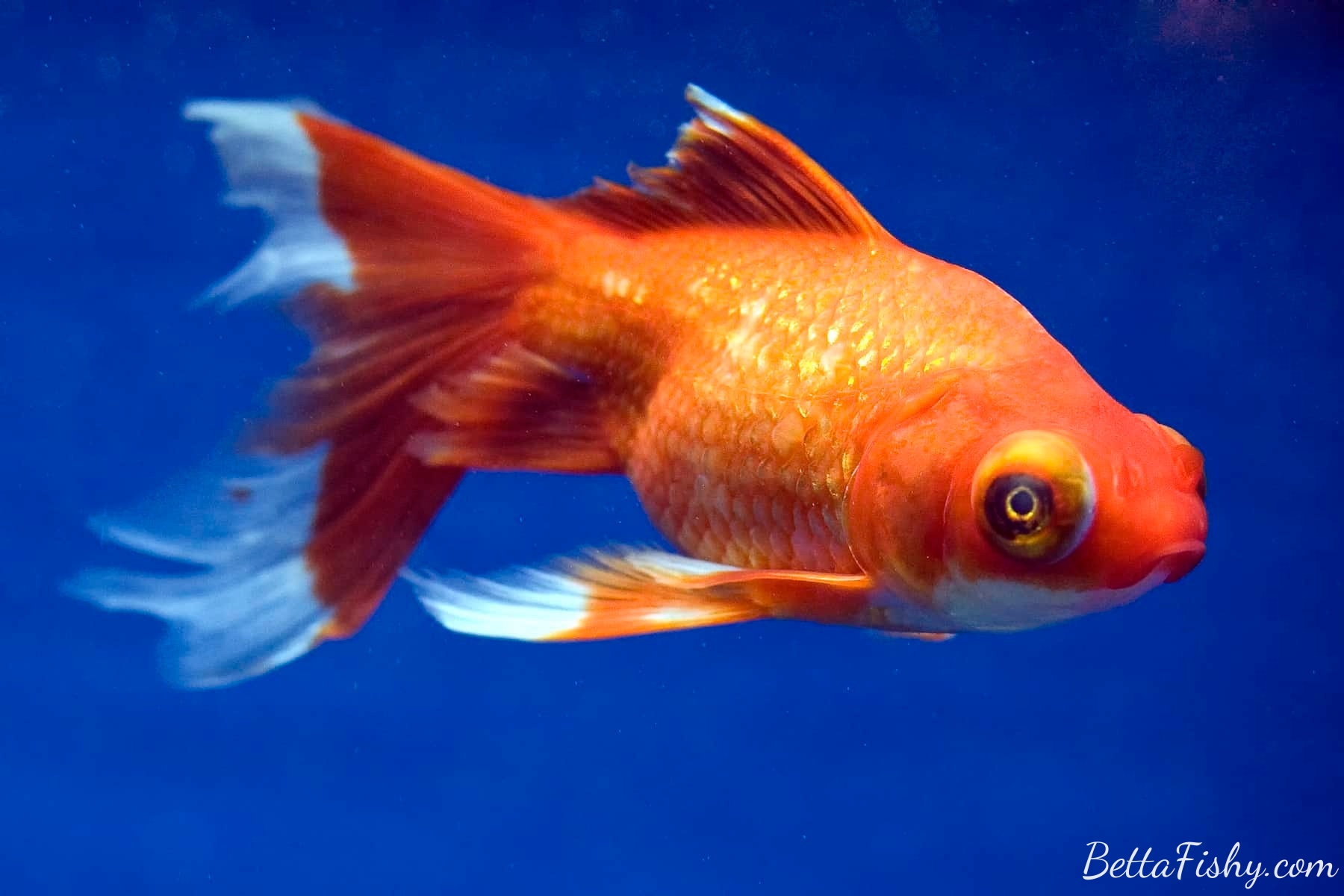
Telescope goldfish are one of the most iconic and popular large-eyed fish, renowned for their trademark bulge-eyed appearance. They have a long history as one of the first fish species domesticated as decorative aquarium pets. Originating in China, telescope goldfish are believed to be the result of selective breeding of Prussian carp over many centuries. They first arrived in Europe around the 16th-17th century and quickly became prized additions to aquariums and ponds.
The trademark feature of telescope goldfish is their pair of large, round protruding eyes. Their eyes are significantly larger than other goldfish varieties and protrude outwards from each side of the head. This gives them a unique bug-eyed appearance. Their eyes are supported by fatty deposits around the eye sockets and transparent projecting corneas that allow for enhanced vision compared to other goldfish. While prone to eye problems if water quality is poor, their oversized eyes give telescopes excellent panoramic vision.
In terms of care, telescope goldfish need at least a 20 gallon aquarium with strong filtration to accommodate their messy eating habits. They prefer slightly cooler water temperatures around 65-72°F. Providing places to hide, live plants, and a quality staple diet will keep telescope goldfish active and healthy. They are social fish best kept in small schools. With proper care, telescopes can live up to 10 years and grow over 12 inches long.
The distinct bug-eyed look of telescope goldfish has made them immensely popular in home aquariums and ponds. Their unique appearance, hardiness, and peaceful nature explain why telescope goldfish remain one of the world’s most commonly kept aquarium fish.
Pufferfish

Pufferfish are well known for their unique ability to inflate their bodies by gulping water or air when threatened. They expand to appear larger and intimidating to predators. Some species can even inflate into a ball shape with spines sticking out.
According to Facts Animal, pufferfish use their excellent eyesight to detect prey while hunting. Their eyes can move independently, providing a wide field of vision to spot food. Pufferfish are ambush predators that wait camouflaged for prey to pass by.
One remarkable fact about pufferfish is that they can close their eyes by sinking their eyeballs into sockets in their skull, unlike most other fish. As described by New Scientist, pufferfish pull in their eyeballs and pucker their skin to essentially “blink” and protect their eyes.
The large, observant eyes of pufferfish allow them to thrive as predators. Their excellent vision compensates for their slow swimming speed. Pufferfish use their big eyes to identify prey, avoid danger, and monitor their surroundings efficiently.
Squirrelfish
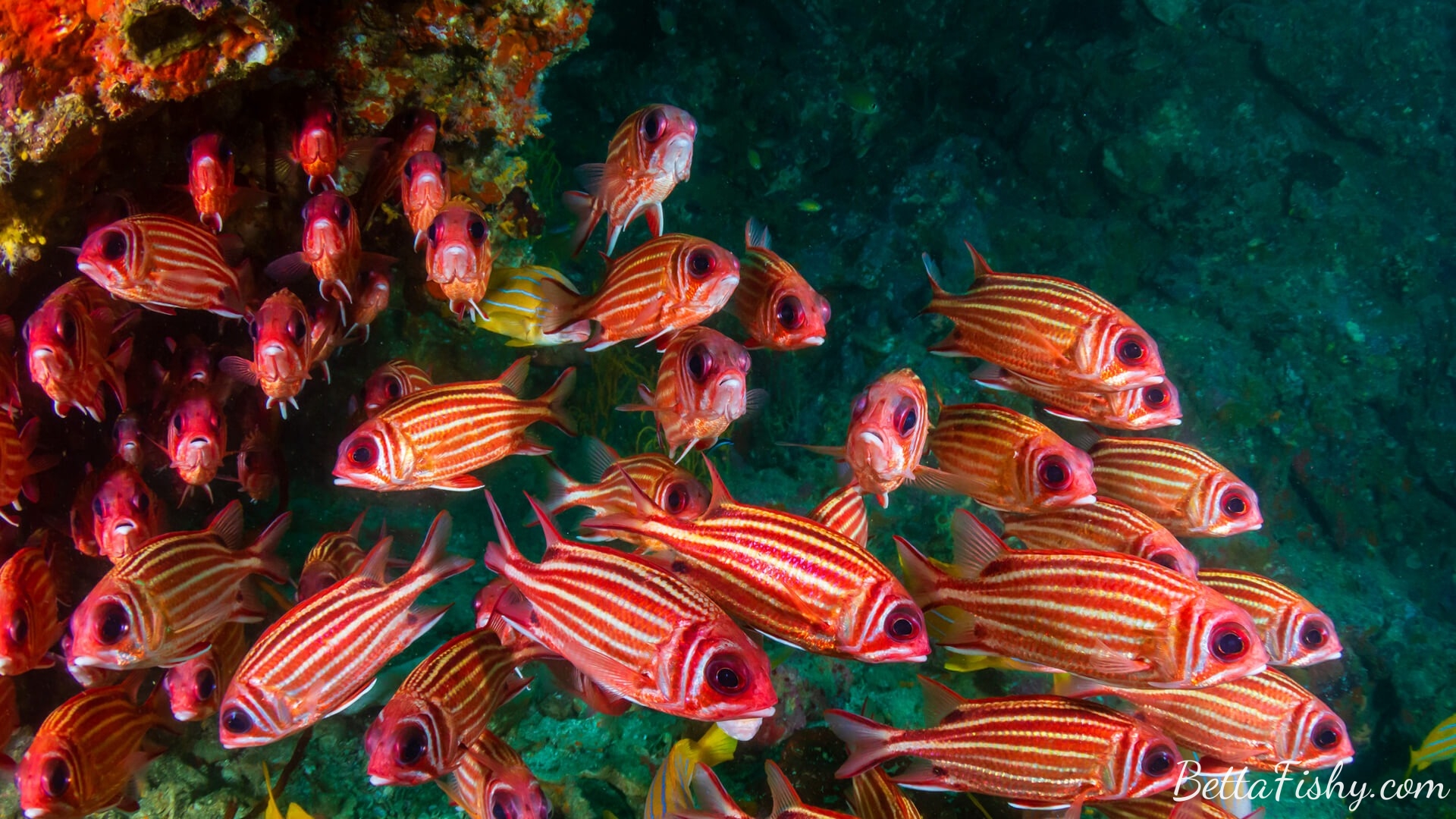
Squirrelfish are nocturnal predators that hunt at night on coral reefs and in tropical oceans. Their most distinctive feature are their large, bulbous eyes that allow them to see well in darkness (University of Queensland, 2021). Some species like soldierfish and longspine squirrelfish have eyes positioned on the sides of the head for a wide field of vision to spot prey and threats.
Squirrelfish get their name from their rodent-like front teeth that stick out like buckteeth. They have long dorsal fins running along their backs and grow up to 12 inches long. Their mouths slant upward, also an adaptation for bottom feeding at night. By day they hide in crevices in the reef or under ledges (Phys.org, 2021).
The giant eyes of squirrelfish are very sensitive to light and motion. Their retinas contain high concentrations of light-gathering rod cells with only a few colorful cone cells. At night their pupils dilate to let in more light. This allows them to hunt successfully even in near total darkness. Their exceptional low light vision gives squirrelfish a key advantage as predators after sunset.
Swordfish

The swordfish is one of the most iconic predators of the open oceans. With its distinctive long, flat bill resembling a sword, it slices through the water in pursuit of prey. The eyes of the swordfish are set far back on the flattened plane of its hammer-shaped head, providing it excellent binocular vision to spot prey from a distance.
Swordfish can reach lengths over 14 feet and weights up to 1,400 pounds. They are found widely in tropical and temperate oceans around the world. Capable of impressive bursts of speed thanks to their powerful, crescent-shaped tails, swordfish hunt smaller fish as well as squid, crustaceans, and other marine animals.
The swordfish uses its rapier-like bill to slash and stun prey during attacks. It also relies on its keen eyesight from that laterally placed position to discern prey shapes in the distance. The coloration and structure of its eyes filters out UV light, enabling the swordfish to spot the silhouette of prey against the lighter surface waters from the depths where it patrols.
Swordfish undergo extensive migrations across thousands of miles between feeding and spawning grounds. Females produce up to 2 million eggs during spawning. The swordfish is cherished both as a commercial fishery species and popular target for recreational sport fishing in tropical seas around the world.
Bigeye Tuna

Bigeye tuna (Thunnus obesus) are prized as both sport fish for anglers and as commercial seafood. Their torpedo-shaped bodies can grow over 6 feet long and weigh over 400 pounds. Bigeye tuna are distinguished by their large, dark eyes which are specially adapted for hunting in the dark depths where they feed. Compared to other tunas, bigeye tuna have much larger eyes relative to their body size, with pupils nearly three times the diameter of yellowfin tuna (Visual function in bigeye tuna).
These specially adapted eyes allow bigeye tuna to dive deep during the daytime to feed on fish, squid, and crustaceans at depths exceeding 3,000 feet where very little sunlight penetrates. At night, bigeye tuna rise towards the surface to feed. Their large, spherical lenses and dilated pupils allow more light capture in the dark depths (Bigeye Tuna – Facts and Beyond). Like many deep sea predators, bigeye tuna also have specialized cellular structures in their eyes to enhance vision in low light.
Bigeye tuna are found in temperate and tropical oceans around the world. They migrate across thousands of miles and have a wide geographic range. Unlike other tuna species, bigeye tuna are able to maintain normal muscle temperatures well below that of surrounding waters. This helps them dive deep while minimizing heat loss. Their dark red meat is popular as sashimi and sushi. Overfishing has led to declining populations, making sustainable management critical.
Barracuda
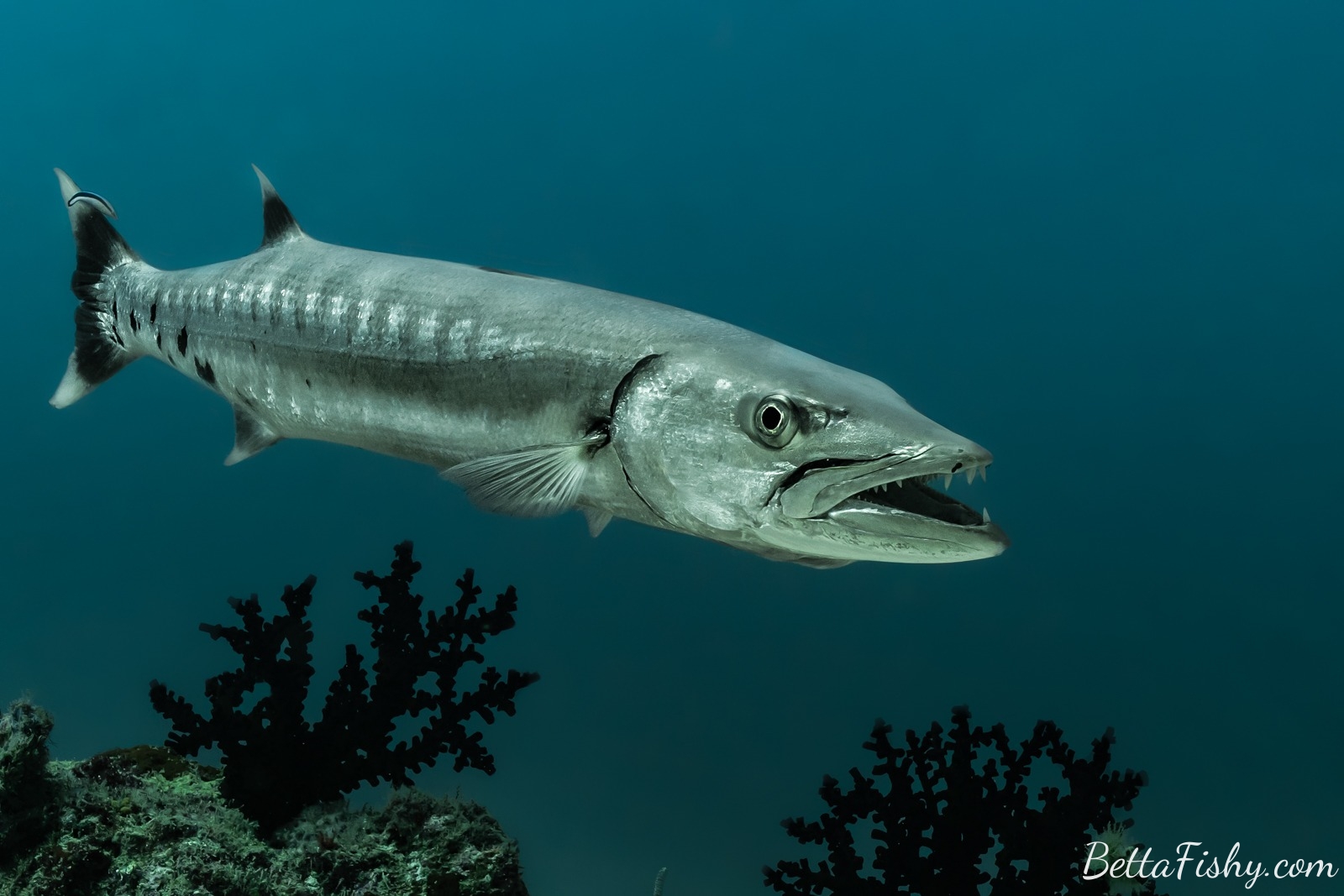
Barracudas are fierce predators known for their excellent vision which helps them thrive in their marine habitats. These torpedo-shaped fish have distinctly elongated bodies that allow them to swim and maneuver quickly when hunting prey (Animal Spot 2022). Their streamlined anatomy includes powerful jaws filled with razor-sharp teeth, and their large eyes are specially adapted to spot prey from far away.
The barracuda’s eyes are one of its most remarkable adaptations. They are placed high on the sides of the head and point slightly forward, giving barracudas excellent binocular vision with a wide visual field. Their eyes are specially adapted to see clearly even in murky or dark water (Barracuda Vision 2022). This allows barracudas to successfully hunt prey at varying depths and light conditions.
Thanks to their superb vision, barracudas can detect prey from up to 50 feet away (Barracuda Vision 2022). They are capable of startling bursts of speed, shooting through the water to ambush unwary fish. Barracudas typically inhabit shallow, subtropical oceans near coral reefs. They hunt during the day and rest at night. Their diverse diet includes fish, octopuses, shrimp, and even seabirds. The barracuda’s specialized adaptations make it one of the most effective marine predators.
Deep Sea Fish
The deepest parts of the ocean are home to some of the strangest and most fascinating fish species with highly adapted eyes for seeing in near total darkness. Many deep sea fish have evolved large, bulbous eyes that allow them to detect even the faintest traces of light in an environment where sunlight barely penetrates.
One iconic example is the viperfish, which has eyes larger than its stomach and green bioluminescent photophores along its body that it uses as a ‘headlight’ to illuminate prey. Its huge eyes maximize its ability to capitalize on even tiny amounts of light.
Another bizarre deep sea denizen is the anglerfish, which has a glowing ‘fishing lure’ protruding from its head to attract prey directly to its massive mouth and teeth. Their disproportionately large eyes help spot prey in the perpetual darkness.
The gulper eel is named for its huge mouth and jaws that can swallow prey larger than itself. Like other deep sea fish, its eyes are specially adapted to see in near pitch blackness, with enormous size to maximize light capture.
Moonfish
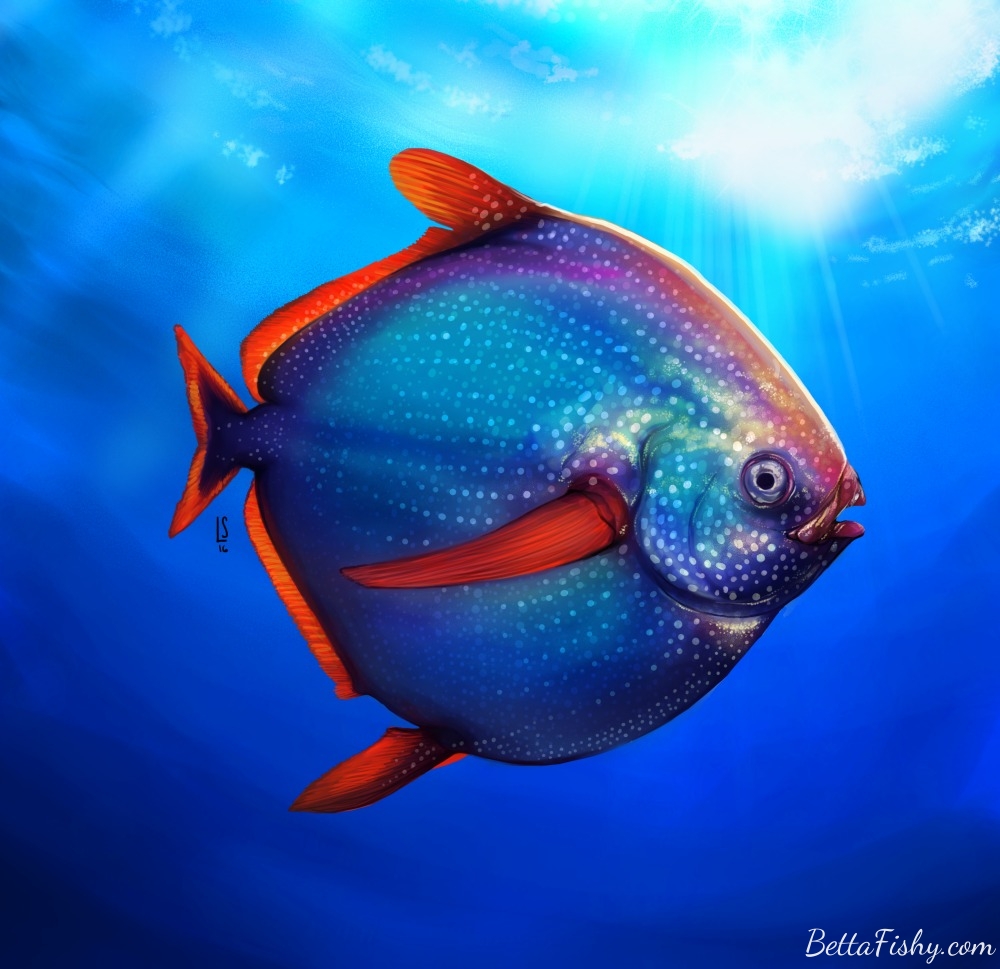
One of the most unique big-eyed fish is the Moonfish, scientifically known as Lampris guttatus. This extraordinary pelagic fish possesses distinctive upward facing eyes that allow it to spot prey silhouetted against the faint light streaming down from above. According to research from Wang et al. (2022), the Moonfish’s highly specialized eyes provide excellent vision to seek and capture active prey throughout the water column.
The Moonfish is found in temperate and tropical waters around the world, usually between 30 to 600 meters depth. With its flattened disc-shaped body and powerful tail, the Moonfish can reach lengths over 5 feet and speeds exceeding 15 mph. Its most distinctive feature is its unusual eyes which are fixed in an upward gaze, believed to help the predator detect silhouettes of potential prey. The Moonfish uses its vantage point below other fish and aquatic animals to surprise attack from below.
Additional key facts about the Moonfish include its silver body with orange fins, ability to maintain an elevated body temperature, and habit of migrating to shallower surface waters at night to feed. The Moonfish possesses a mouthful of sharp fangs used to grip squid, crustaceans, and small fish. Its large, specialized eyes and stealthy hunting techniques make the Moonfish one of the most fascinating big-eyed species in the ocean depths.
Conclusion
Through this overview, we’ve explored some of the ocean’s most fascinating big-eyed fish species. From the iconic giant eye of the telescope goldfish to the dinner plate-sized orbs of the barrelicuda, these animals showcase the incredible diversity and adaptation of fish vision.
As we’ve seen, large, highly-specialized eyes provide many advantages for ocean survival. Extra-sensitive vision allows fish to spot prey and predators in the dimly lit depths. Bulbous eyes give almost 360-degree vision to detect threats from all angles. Telescopic eyes help pinpoint tiny creatures from afar. Without these perfectly evolved peepers, many species would struggle to thrive.
The oceans teem with over 20,000 identified fish species, each with its own remarkable features. But few characteristics are as visually striking and functionally important as the oversized eyes found across a variety of fish families. From anglers’ aquariums to the farthest reaches of the abyssal plain, fish with the big eyes beauties offer a captivating glimpse into the many wonders of marine life.

